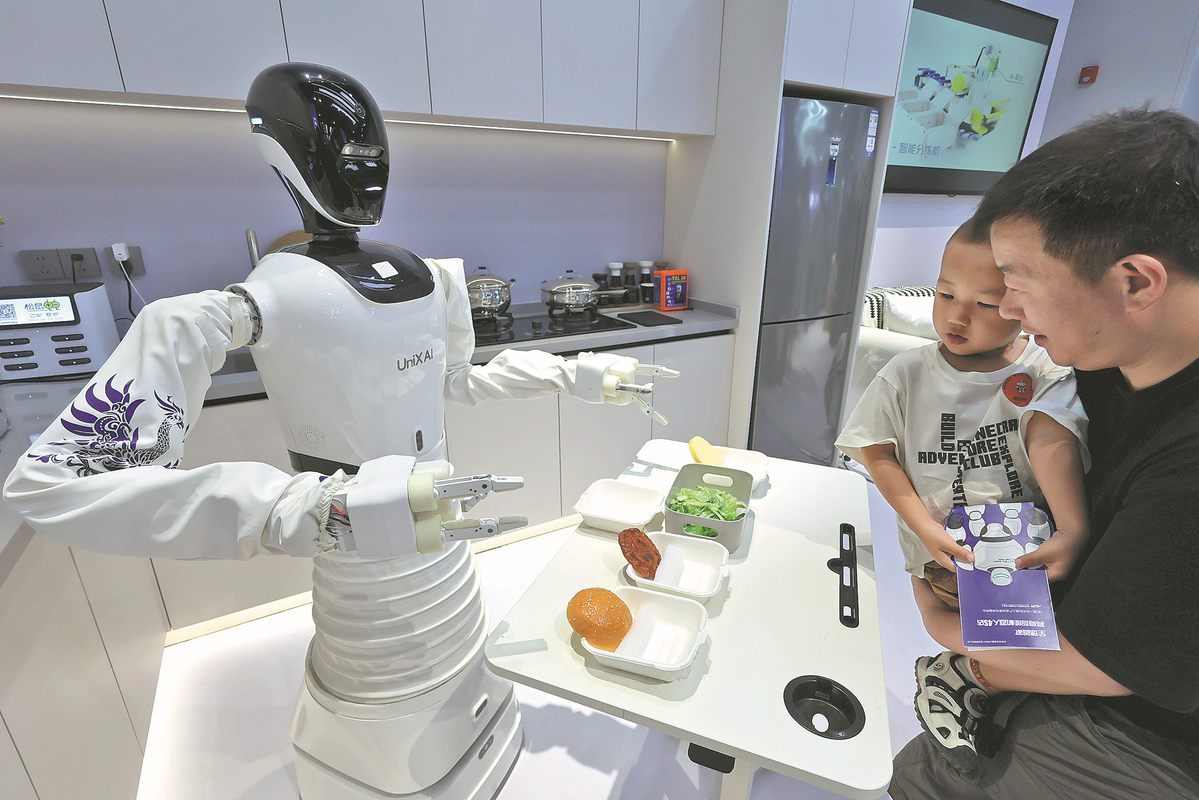Robot chefs cut costs, boost efficiency


Robot chefs are gaining in popularity, on the back of significant cost-effectiveness and excellent quality control.
Robot chefs are not a new concept. For example, the Changsha-based restaurant franchise Bawan uses such robots in its outlets. So far, Bawan has opened over 500 outlets, which have all deployed self-developed robots to cook food. According to its official website, these have now been updated to the third generation.
Xiaocaiyuan, a Hong Kong-listed restaurant specializing in Anhui cuisine, deployed robotic cooks in some of its outlets as early as 2023.
According to the prospectus released by Xiaocaiyuan before its listing, a portion of the funds raised from the public flotation will be used to purchase 3,000 such robots, with a unit price of 50,000 yuan ($6,972) per robot and an estimated total cost of 150 million yuan.
The purchase quantity of 3,000 robot chefs, based on the current number of its over 600 stores, means that on average, each Xiaocaiyuan outlet will deploy about five of these robots.
Several franchise restaurants are also deploying robot chefs, including Nonggengji Hunan Native Cuisine, Jin Ding Xuan, Beijing Micun Technology Co, CSC Group, and Nanchengxiang. They are able to cook highly standardized dishes such as Yuxiang shredded pork, fried eggs with tomato, and Kung Pao Chicken.
Do these cooks really save money? Take Xunxiangdidai, a restaurant that serves Anhui cuisine, as an example. According to the Hongcan Industry Research Institute, by using intelligent devices and traditional stoves, robot chefs shoulder half of the stir-frying jobs, saving up to 60 percent in salaries. Normally, a kitchen needs two human chefs, and their salaries add up to around 18,000 yuan. Robot chefs can, however, operate five to six stoves at a time, greatly cutting down on salaries.
Wang Peng, an associate research fellow at the Beijing Academy of Social Sciences, said: "The labor cost of the catering industry continues to rise, and stir-frying robots can significantly reduce salaries and social security expenses of chefs. Long-term operation can significantly reduce overall costs. At the same time, its efficient operation can improve meal delivery speed, increase the number of customers served per unit time, and thereby increase restaurant revenue."
In addition, robot chefs are able to accurately execute preset programs for cooking, strictly control the heat, seasoning dosage, and meal preparation time, ensuring stable and consistent taste and quality of dishes, which is conducive to shaping a unified brand image for chain catering, and enhancing consumer trust and recognition of the brand, he said.
The current fast-paced lifestyle of consumers requires high efficiency in serving meals. The fast-serving feature of stir-frying robots can meet the demand for instant dining, and has great potential in the fast food and takeaway fields.
Moreover, it conforms to the trend of digital and intelligent transformation of the catering industry, and can deeply integrate with restaurant management systems to optimize operational processes, he added.
Guo Tao, individual angel investor and an expert in the artificial intelligence sector, said: "Although the prospects of robotic cooks are bright, the road ahead is full of challenges. At present, it is difficult to accurately replicate the unique taste and personalized flavor of Chinese cooking at the technical level, and significant breakthroughs are needed in the research and development of complex dishes. In terms of economic costs, high equipment purchase and maintenance costs have deterred many small and medium-sized catering businesses. In the field of health and safety, improper cleaning and disinfection of equipment can easily lead to health hazards."
In addition, the operational programming of the robot chefs requires high digital skills from employees, which undoubtedly increases the difficulty and cost of employee training. How to improve cooking efficiency while also optimizing the taste experience has become the key to whether it can fully replace manual labor, he said.




































